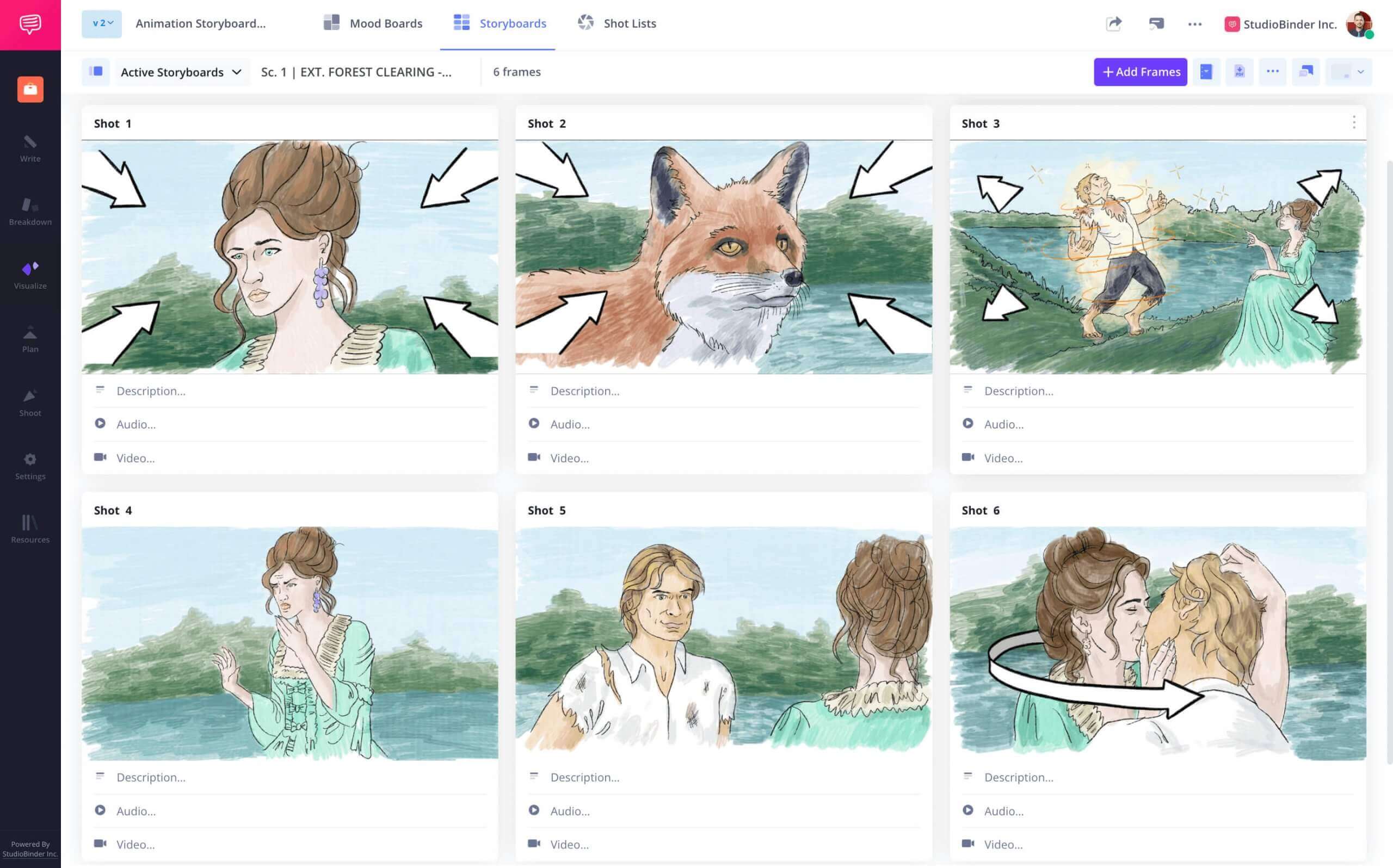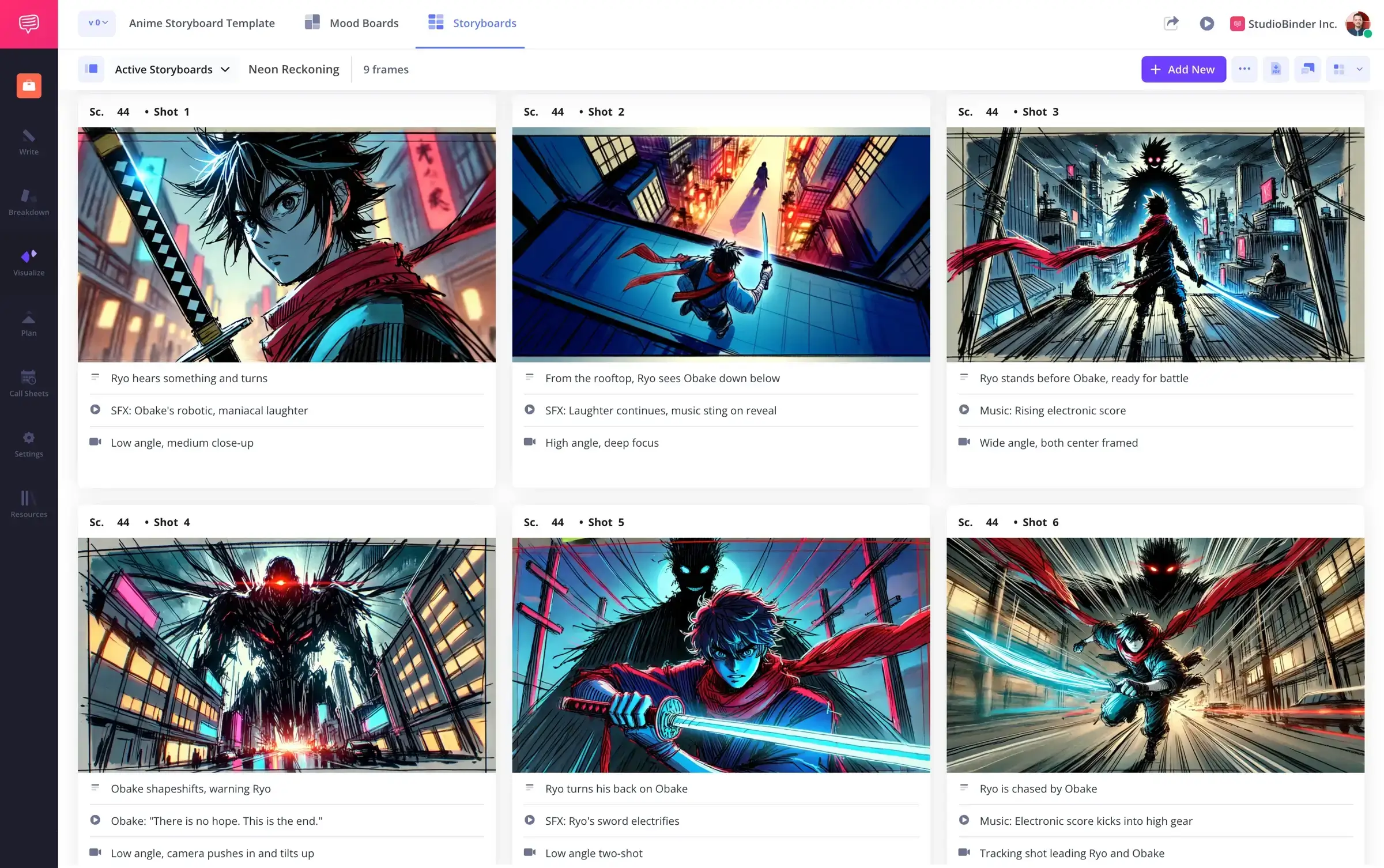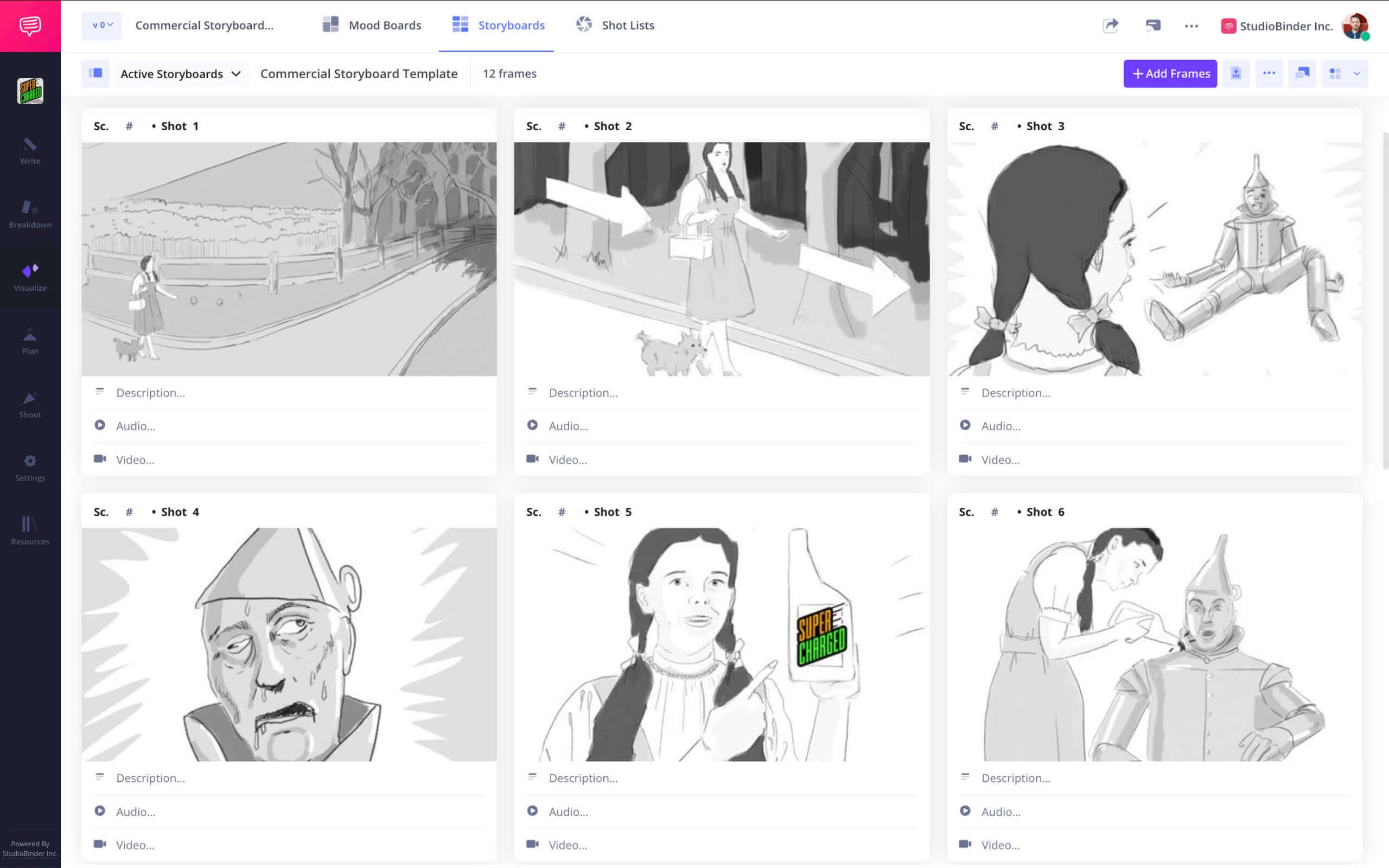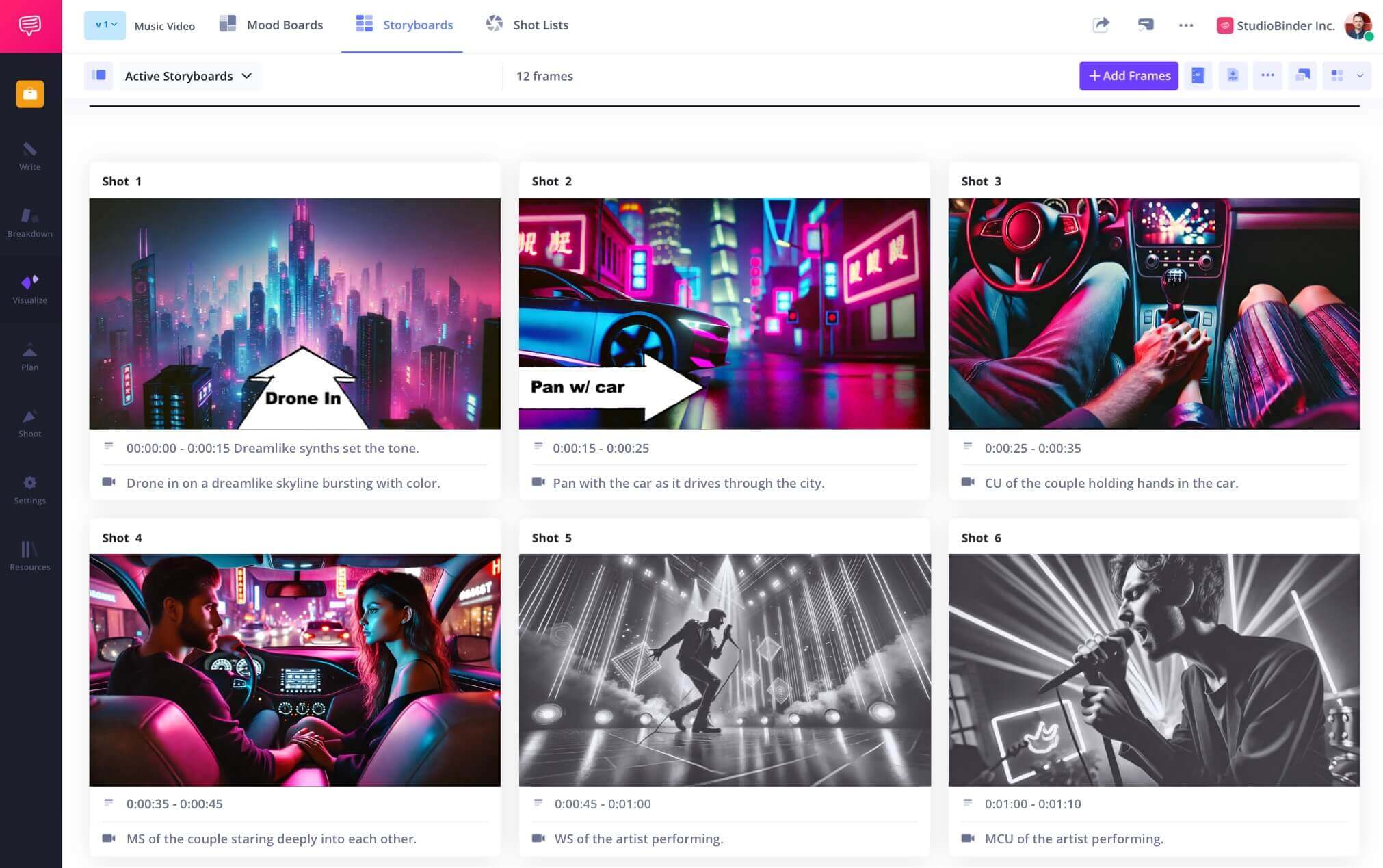Professional Storyboards
Visualize your ideas
StudioBinder makes it easy to design professional storyboards that capture every detail of your vision.
Storyboard Builder
Streamline pre-production
Use our storyboard builder to map out each scene and shot with precision followed up with pre-production software which includes shot lists, mood boards, shooting schedules, call sheets and more.
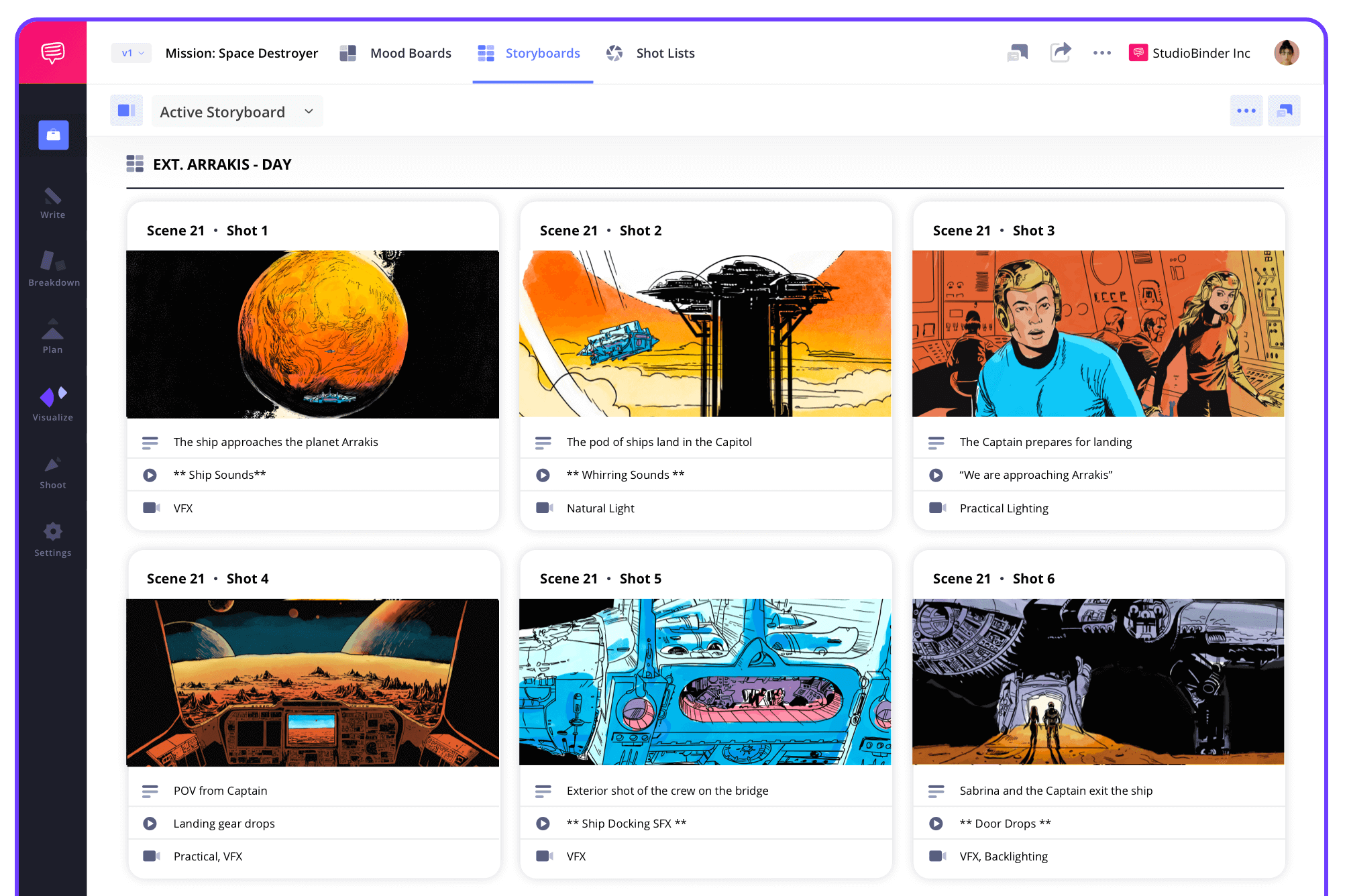
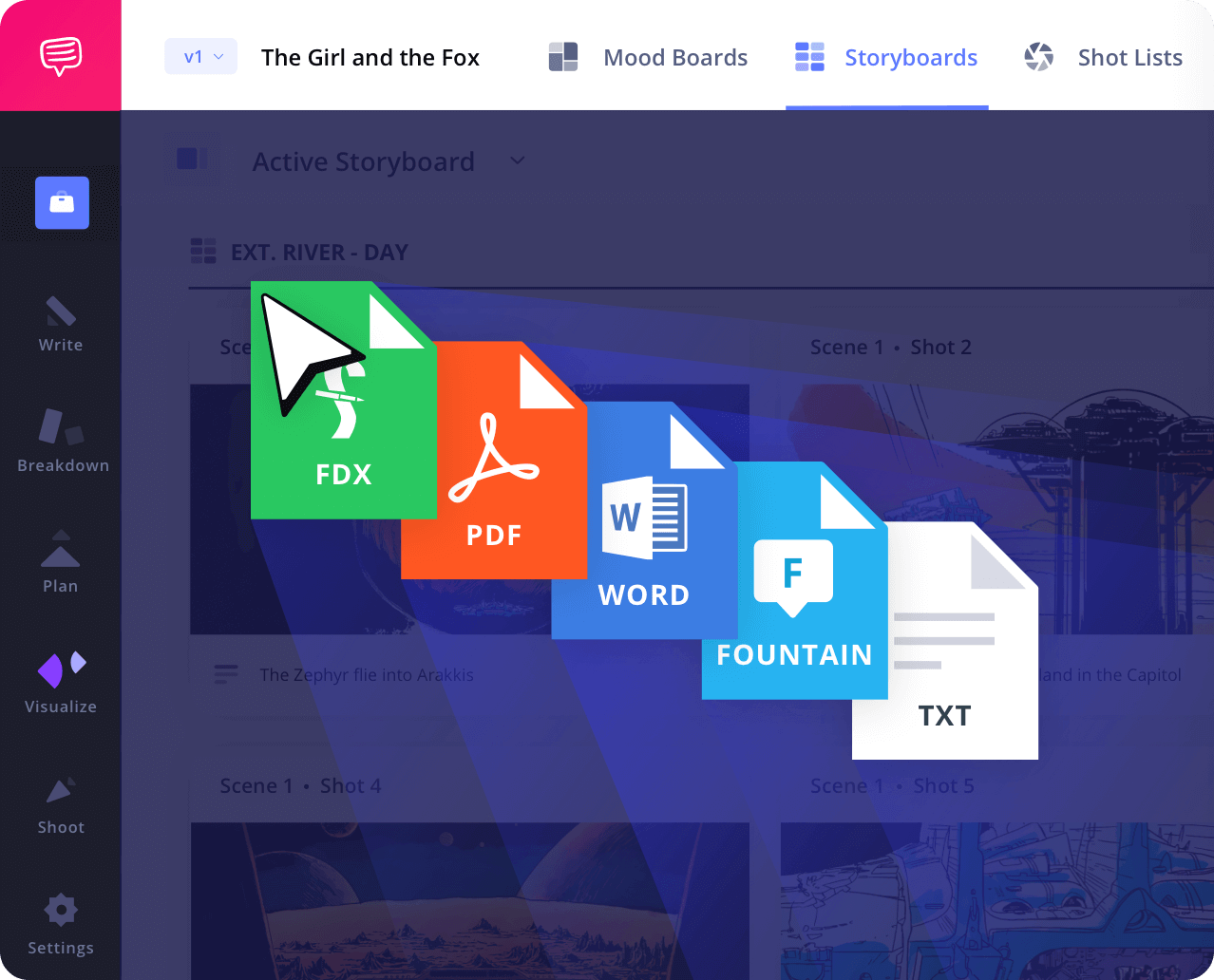
Script to Storyboard
Turn your screenplay into a storyboard
Import a screenplay or write one directly in StudioBinder. Our platform allows scripts made in Final Draft (.fdx), PDFs, Word, Fountain and text files. Every scene is automatically broken down into panels, making it effortless to transform text into professional storyboard visuals ready for review.
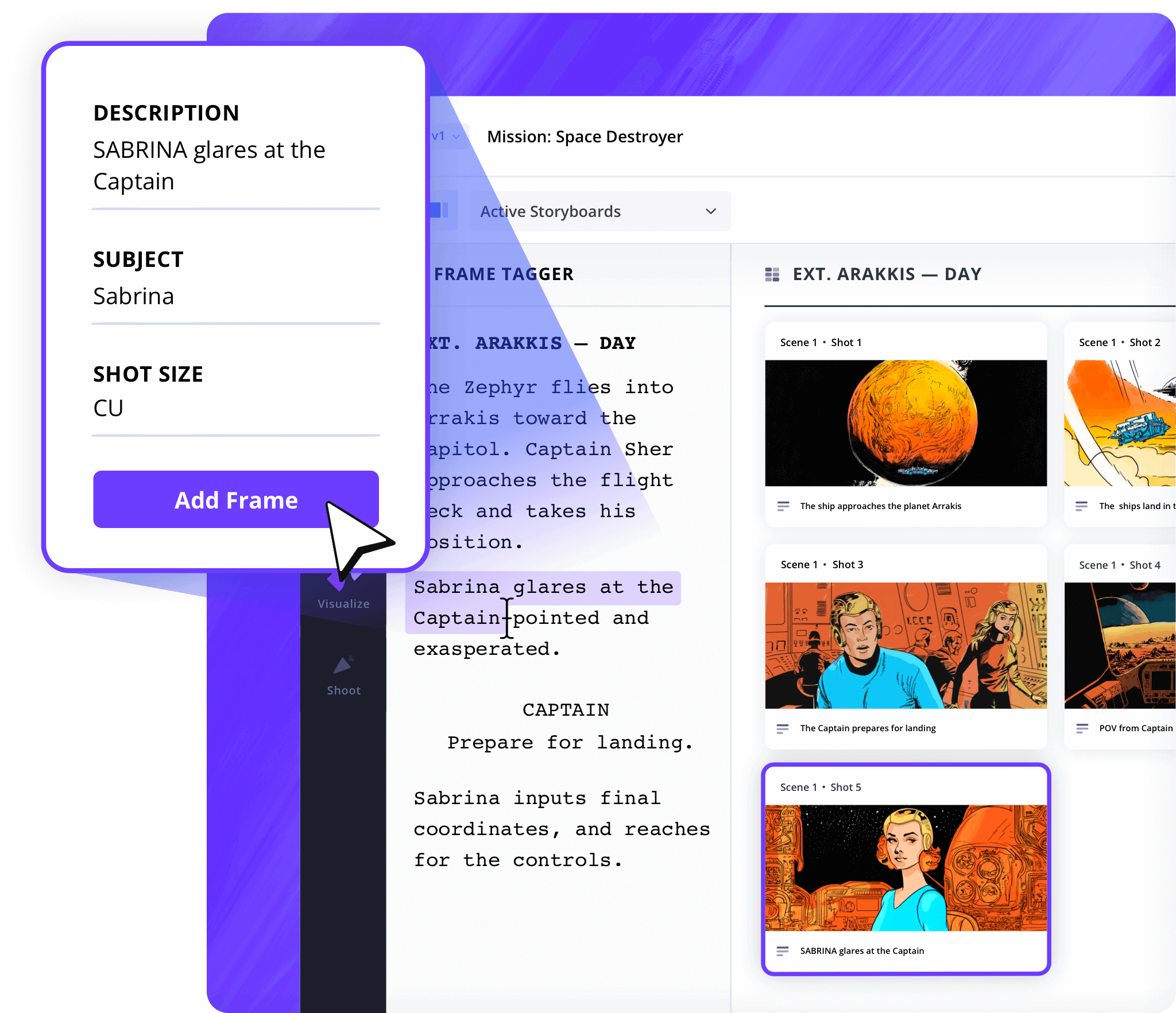
Shot Tagger
Tag and organize each shot
Tag specific moments, dialogue, or actions directly from your script to create corresponding storyboard panels. This keeps storyboards for animation or live-action projects perfectly aligned with the narrative.

Shot Specs
Choose the perfect storyboard layout
Select from multiple shot spec templates to fit the style of your professional storyboard. Add lens types, camera movements, or notes to guide your production crew.
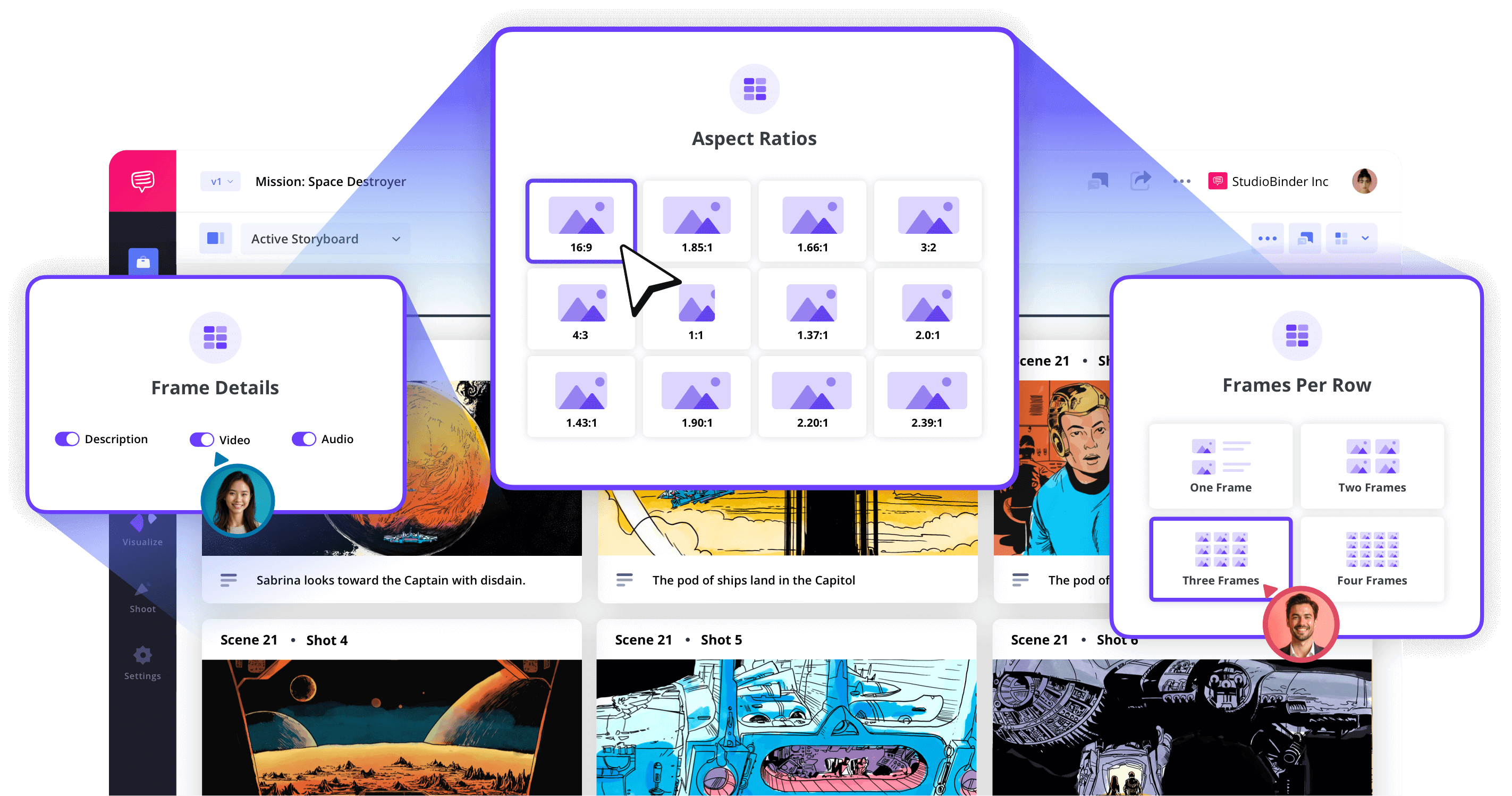
Image Editor
Enhance storyboard visuals
Upload reference images, sketches, or stills and refine them with built-in editing tools. Adjust brightness, add storyboard arrows, or overlay captions to create animation storyboards or live-action visual plans that stand out.
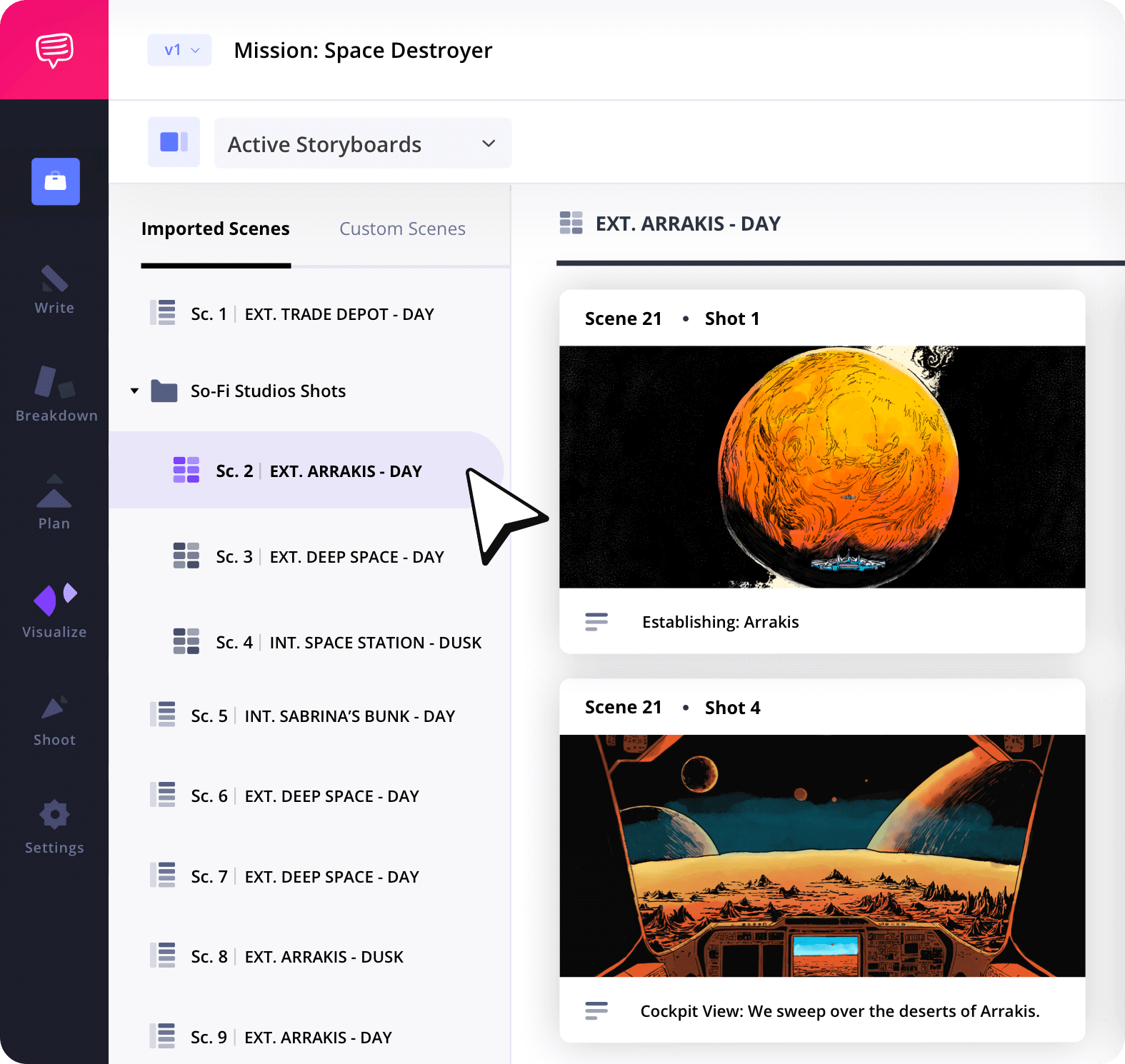
Storyboard Groups
Organize your storyboard
Group storyboards by scene, location, or sequence to keep production organized. This is ideal for both animation storyboard workflows and multi-location shoots.
Collaborate
Work together in real time
Invite your team to contribute to professional storyboards by adding panels, images, and comments. Keep communication clear across directors, animators, and crew.
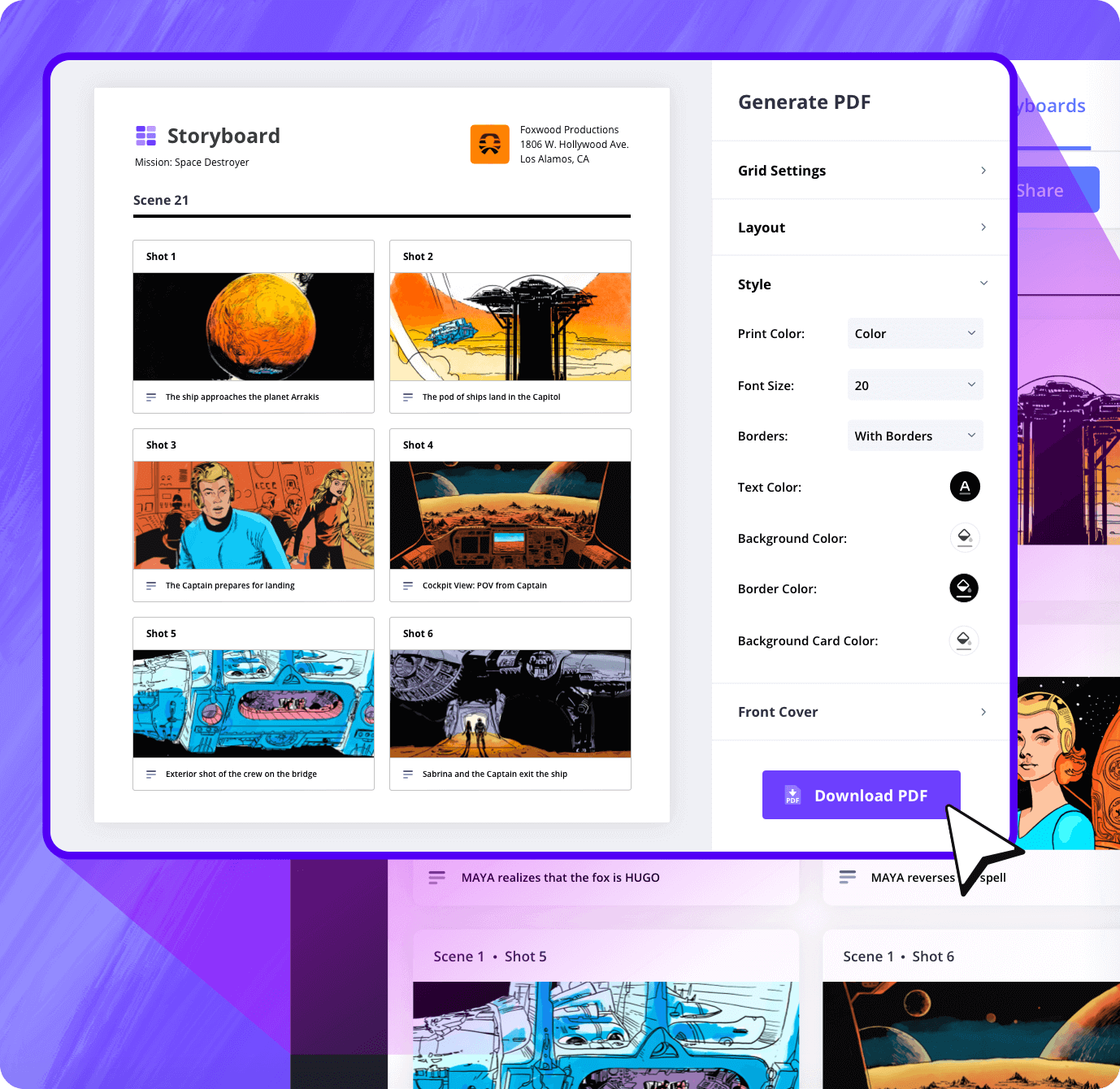
Customization
Export custom-branded PDFs
Export professional storyboard PDFs with custom layouts, branded covers, watermarks, and scene numbers. Deliver a polished visual plan to clients, investors, or your team.
Sharing
Share storyboards instantly
Send professional storyboards via secure share links for instant access. Team members can leave comments or view them from anywhere without needing to download files.
Explore Features
More storyboard features
Aspect Ratios
Choose an aspect ratio that best suits your project.
Column Layouts
Adjust how many columns your storyboard will have.
Image Library
Reuse storyboard panels from previous projects.
Shot Numbering
Choose between digits, letters, or a custom shot numbering.
Storyboard Archive
Archive old storyboards to keep an accessible history.
Color-Code Shots
Label or call out specialty shots with colors.

What are the 8 steps in storyboarding?
Open StudioBinder on your browser.
Click on the Storyboards tab on the project homepage.
Choose to either import a script or create a storyboard manually.
Name the storyboard, set the aspect ratio, and select the number of frames.
Add an image to each frame from the Media Library or upload new images.
Edit your images with a suite of tools, including filters, text, and arrows.
Enter details, including the scene number, description, and notes.
Create a custom PDF, send a view-only link, or invite collaborators for feedback.
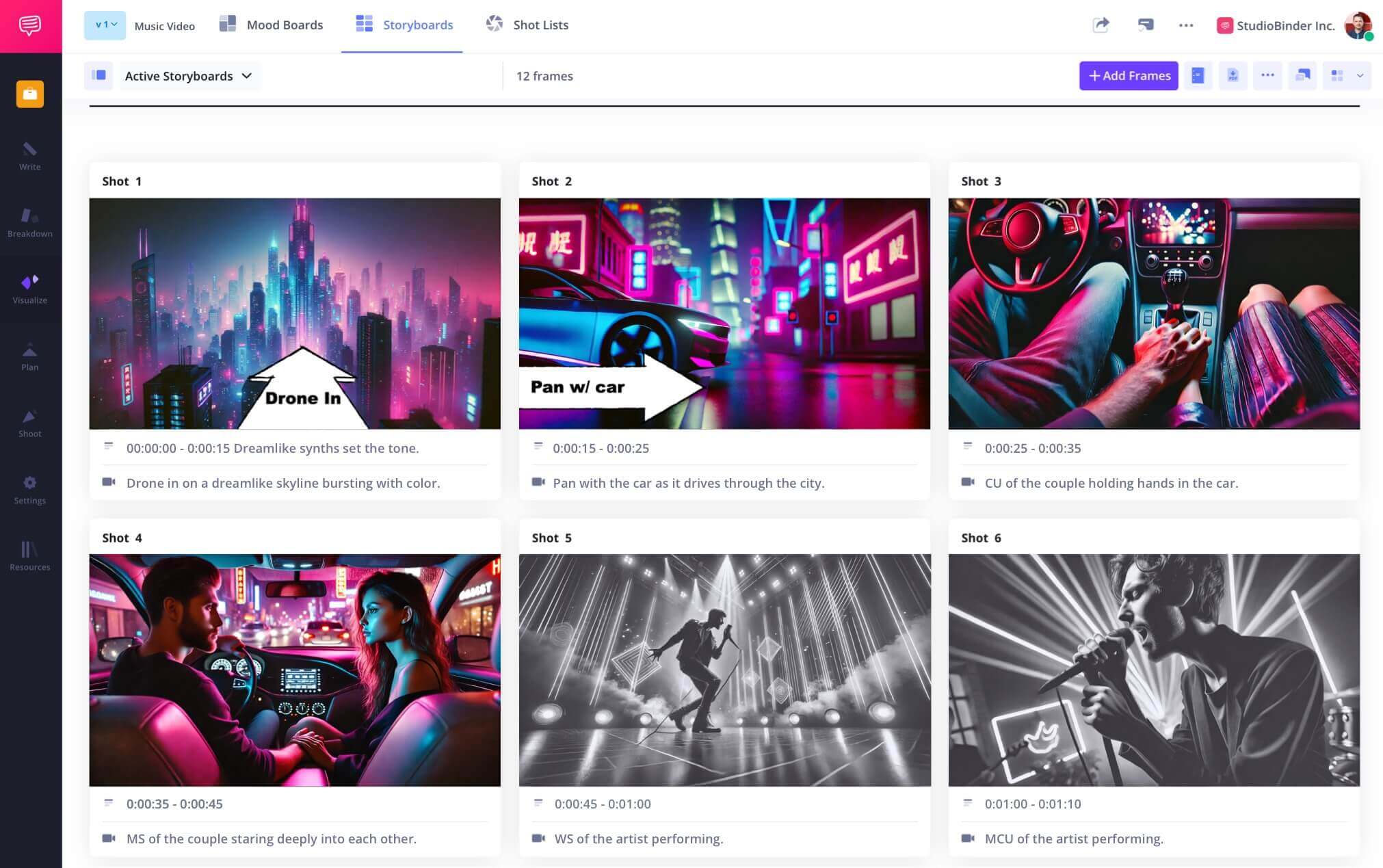
Frequently Asked Questions
Your questions, answered
To make a professional storyboard, you'll want to include the following: highly detailed and clear images, shot descriptions for context, notes for any special considerations like stunts or VFX, text or arrows to indicate camera or character movement, and a strong sense of continuity that flows from panel to the next.
On most professional productions, the Storyboard Artist is the one to generate the storyboards. These are dedicated artists who work closely with the director and sometimes the DP to generate the "ground floor" for how the project will come to life visually.
There is no single path to becoming a professional Storyboard Artist, but you'll need exceptional illustration and design skills no matter which path you take. You can find storyboarding classes online or become a self-taught artist.
There is a union for Storyboard Artists through the Art Director's Guild IATSE Local 800 that you will want to join at some point when you become eligible.
As you work on various projects, you'll want to assemble a professional storyboard portfolio. Obviously, this should showcase your best work, but you should also consider making your portfolio diverse as well. This will demonstrate that not only are you a professional storyboard artist, but you can also work on a variety of projects as well.
Professional Storyboard Artists use any and all tools in their work. Some might stick with more traditional methods like pencil and paper, while others might embrace the modern style with digital storyboards.
Every Storyboard Artist has different preferences, of course, but the general consensus is that simple, plain white copy paper is the standard choice. It's sturdy enough to be handled repeatedly and for when the eraser inevitably comes out to remove mistakes.
Customers
Trusted by the Best
Modernizing production workflows at renowned studios worldwide.




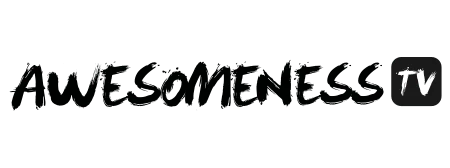





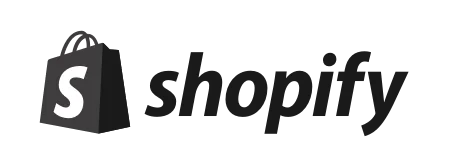

Today’s productions use StudioBinder to streamline their process, and collaborate on better content together.
"I can be a part of the conversation and see when someone finishes a task."
Watch Testimonial ➜
"StudioBinder makes pre-production that much quicker for out team."
Watch Testimonial ➜
"Call sheet confirmations have instantly made our life that much easier."
Watch Testimonial ➜
